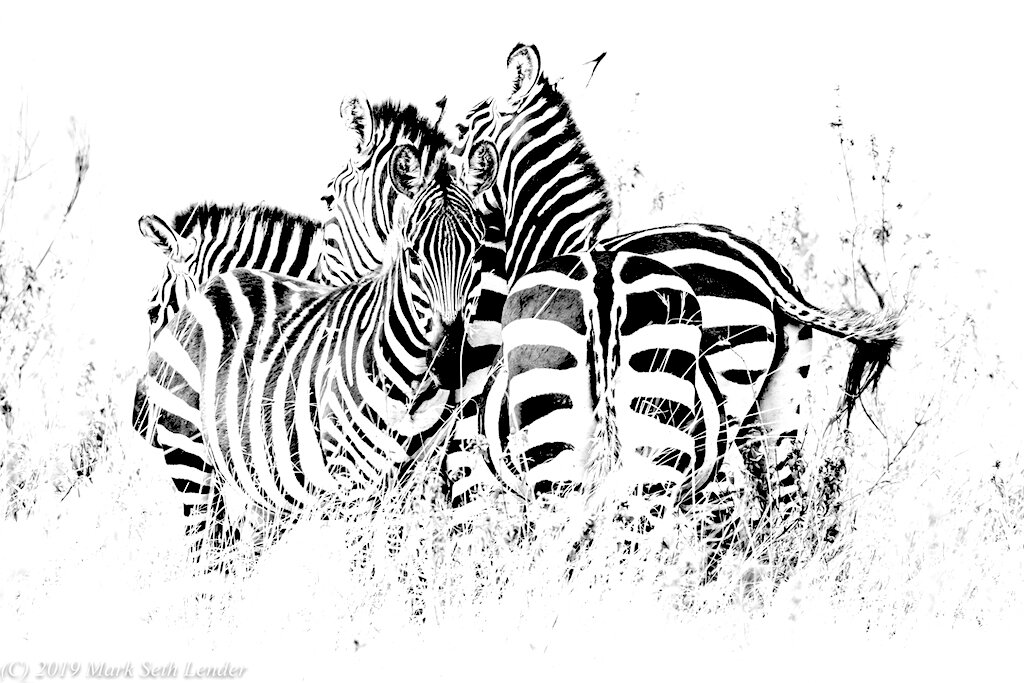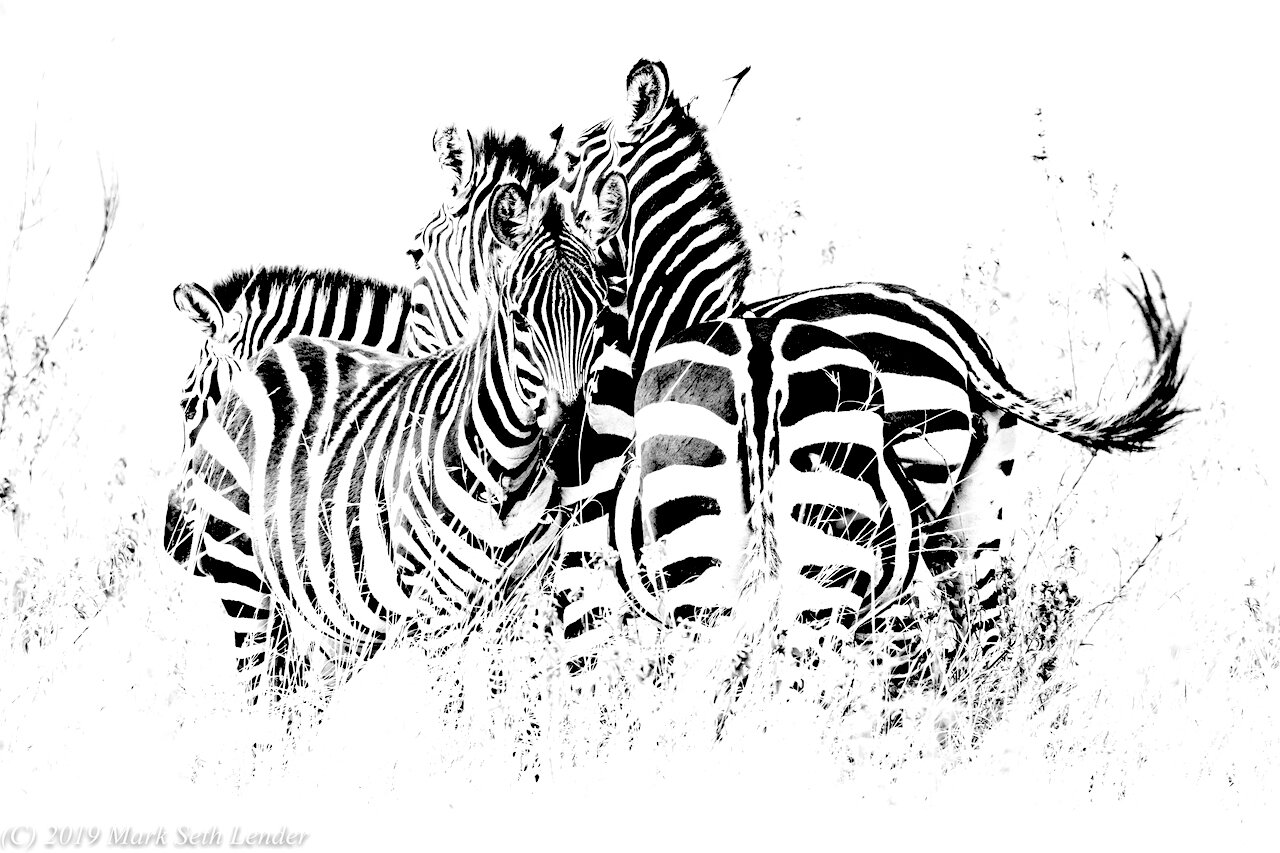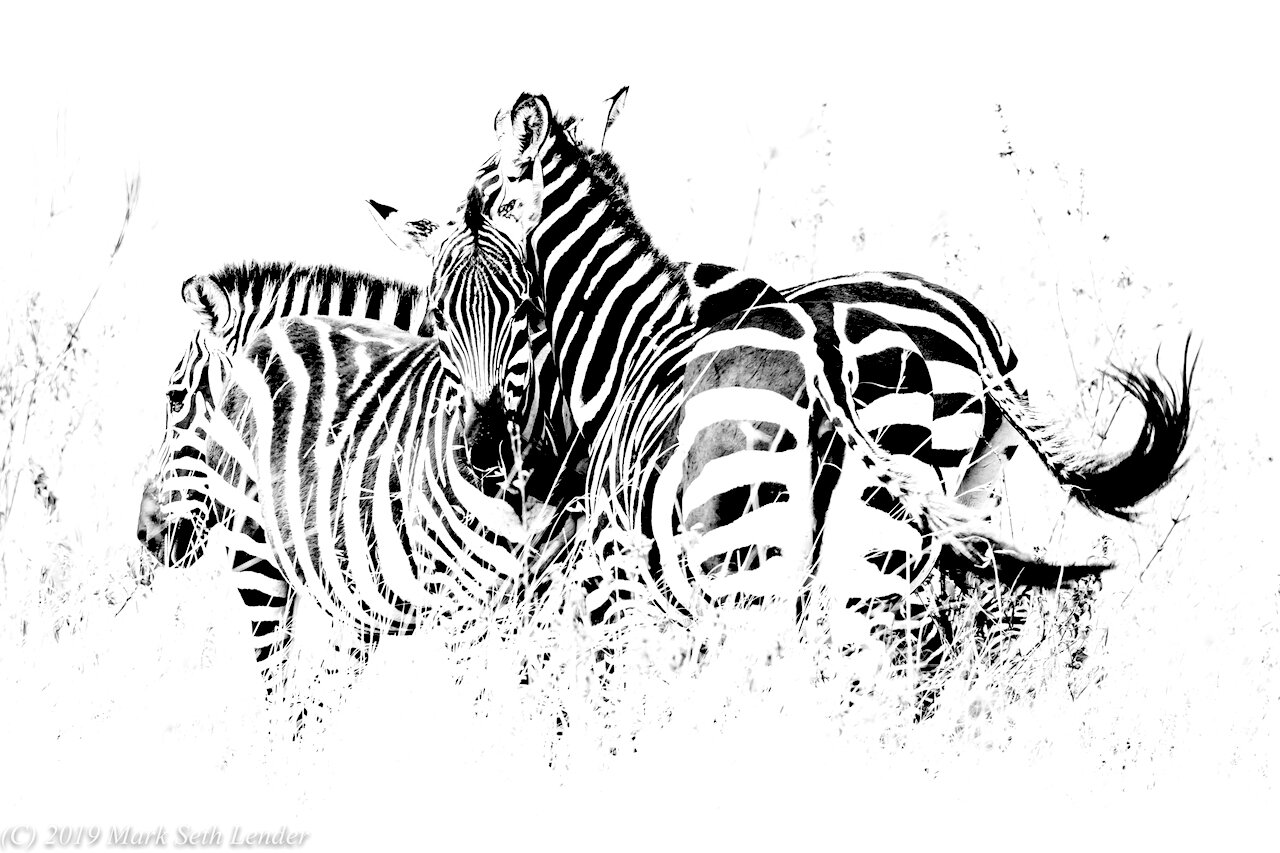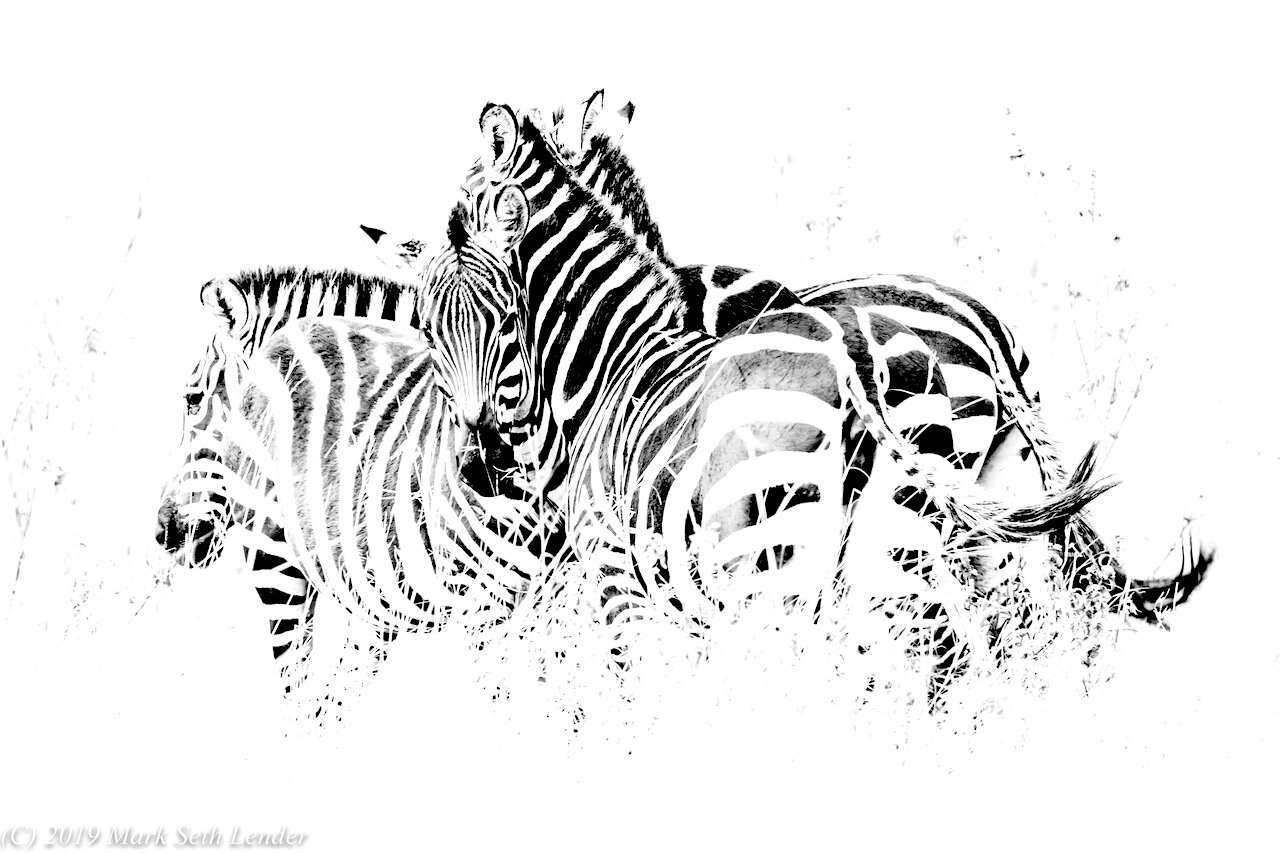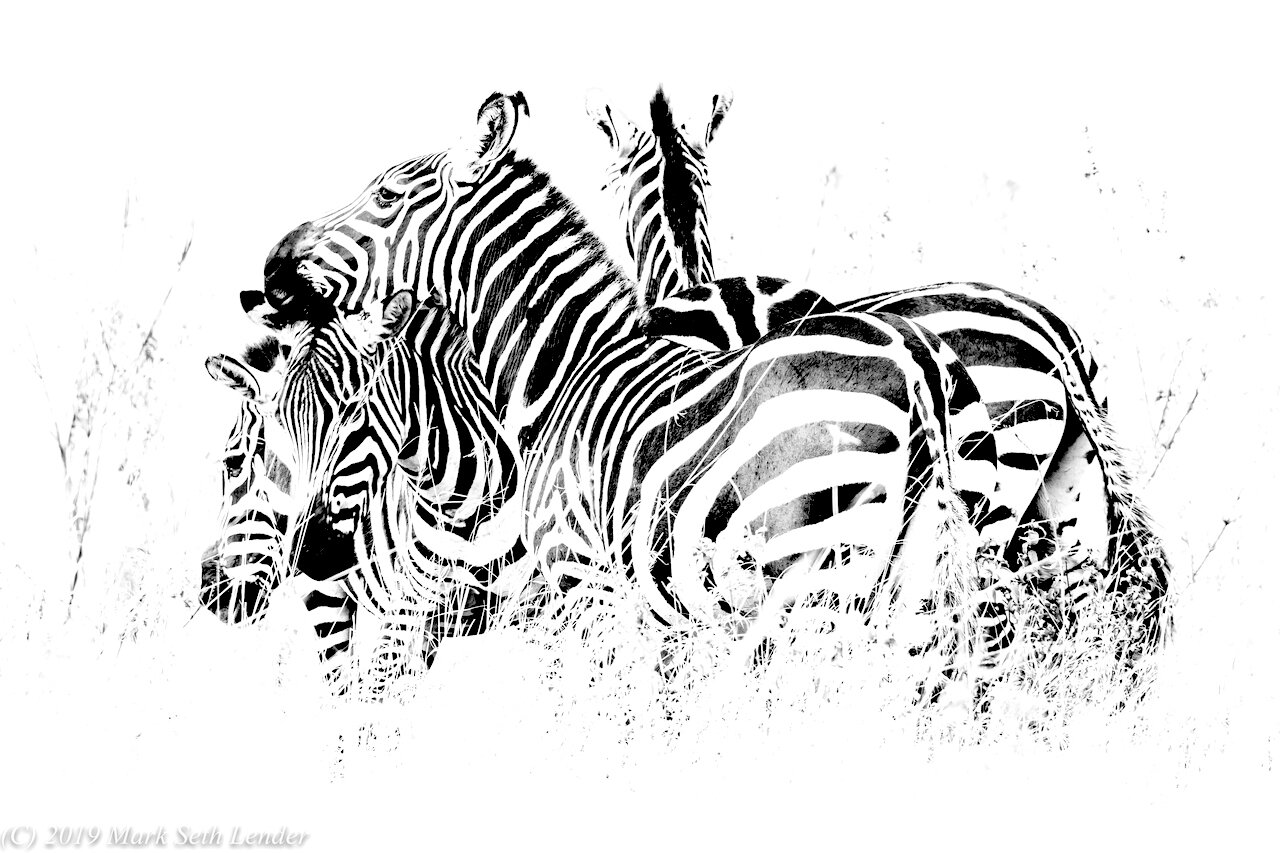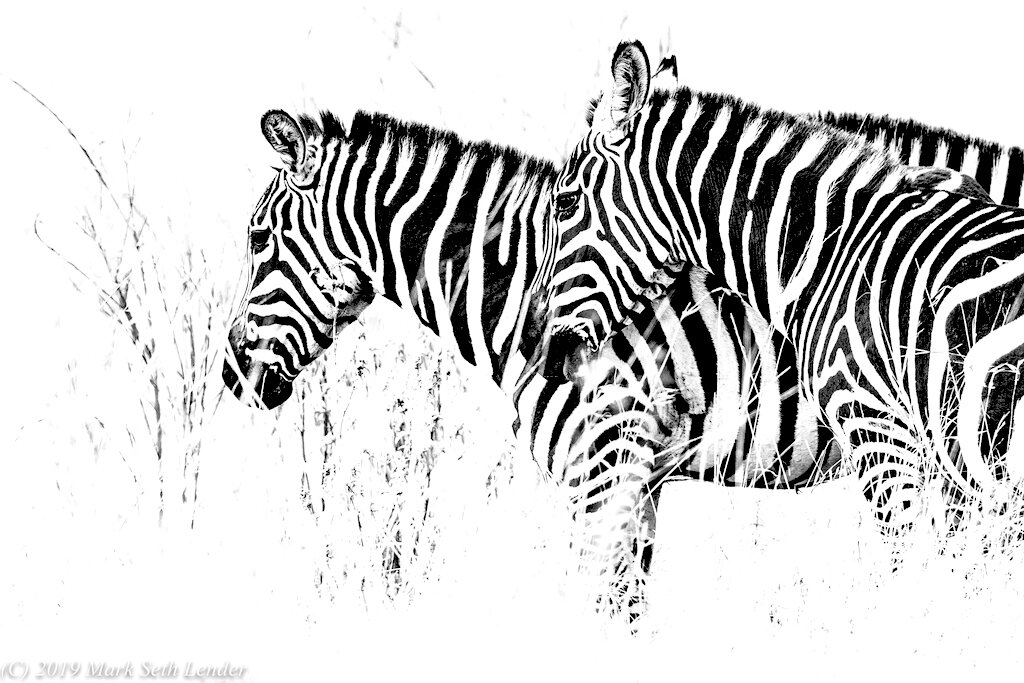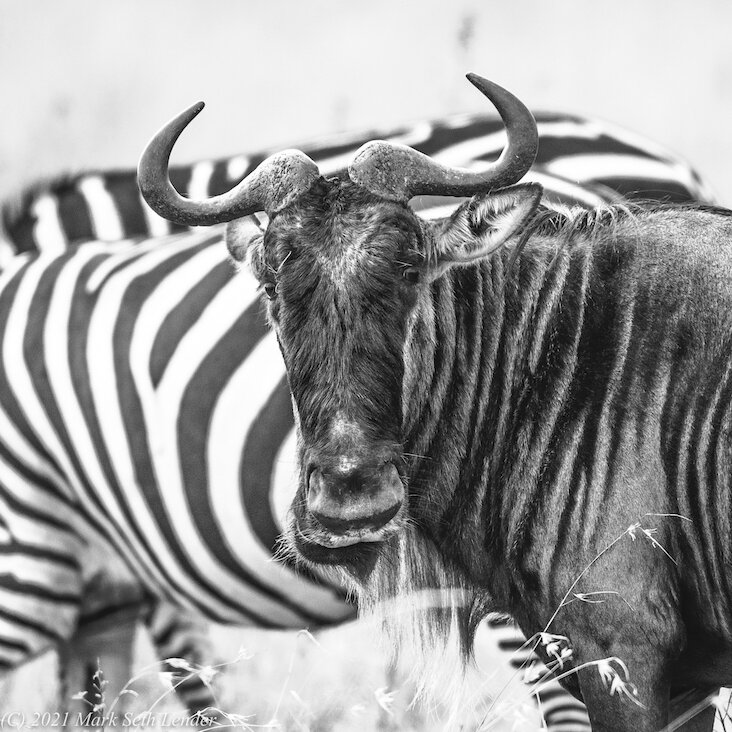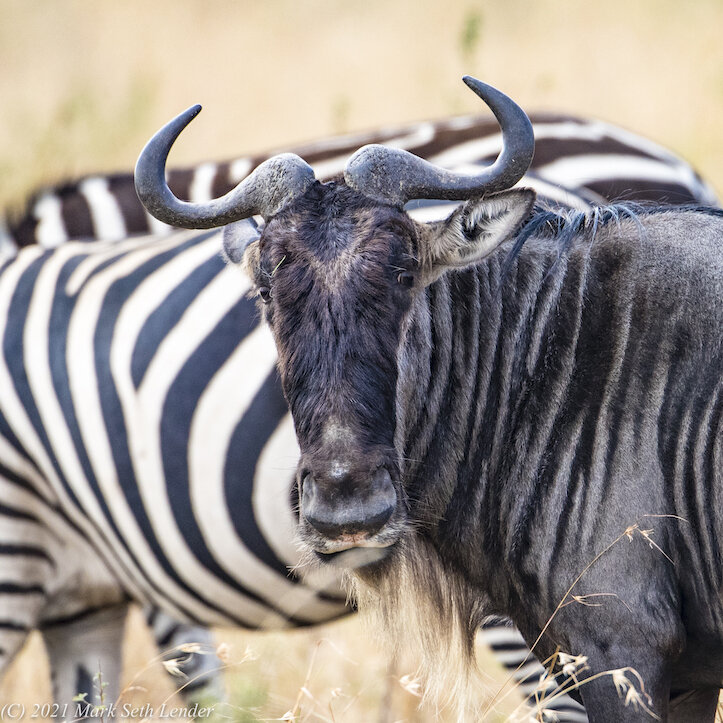Horse of a Different Color
Poet and storyteller, mark Seth Lender wonders why are these “horses’ wearing strips? Image: Mark Seth Lender. Zebra in the Masi Mara, Kenya
Mark Seth Lender, Poet, Story teller, Living on Earth Explorer in Residence, and Destination; Wildlife Team Member.
©2019 Mark Seth Lender
All Rights Reserved
A Horse of a Different Color
Zebra are making themselves painterly. Spreading out. Milling about. Closing the gap. Becoming a knot, a knitting a… Tapestry. Abstract. Abstruse. Neither close nor distant on first glance and are they Herd (Indivisible) or Horse (Invisible)?
Or both?
That’s the trick of it.
And whether White Horse herd in shadow or a Dark Horse herd in light, even the predators (for whom disambiguation is their only business) struggle to get it right. There are too many decisions to make!
Which is the point of it.
The lioness furrows her brow (did they give her a migraine?). The leopard stares, and blinks, as if he cannot focus (has he had too little sleep?).
Jackal packs it in.
Wild Dogs loll their tongues then sit down (as if they have to have a think).
White-backed Vultures (they know what it’s all about) repeat their mantra silently: circle, circle, wait… wait...
While the spotted hyenas (being opportunists) will let Nile crocodiles first sort it all out.
Well, Zebra did not have to go to finishing school to learn that Living is an Art, that One is decoration and strength in numbers is the only way to save your hide. It is not wisdom, it is just a fact of Nature, there is great danger in going it Alone. Those are the breaks.
There’s little bending:
Stand apart and lonely never wrote a Happy Ending.
Mark’s Field Notes
✔︎ Trip Tips
Where: Kenya
When: Dry season. Late June - October
How: Safari
Notes: The economics of safari is a major means of conservation. Perfect for all ages and abilities. Contact us
Zebra and Wildebeest Often Herd Together.
Two reasons are given for the admixture. First, that zebra supposedly prefer to eat tall grasses and wildebeest the shorter grass meaning they do not compete for forage. That said, I have plenty of photographic evidence of wildebeest bending low to graze but when they raise their heads what they are chewing is a mouth full of tall grass.
Secondly - and I suspect it is the more compelling reason – zebra have very acute eyesight and wildebeest have an acute sense of hearing. While the one more readily sees predators coming the other hears them, recognizing not only the sound of the predator per se but also the distant alarm calls of other species signaling a predator’s approach.
What Does A Predator See?
Turn this around the other way. What does a predator see? Many grazing animals in two convenient sizes intent on grazing. Tempting. But also, a moving mass of stripes in at least five distinct tonalities (two for zebra, three for blue wildebeest). To human eyes, even when frozen in place in a photograph, the black and white of a group of zebra disguises how many individuals occupy the frame. It takes a moment for the brain to resolve it. The blue wildebeest of the Maasai Mara have dark brown, light brown, and bluish gray stripes, shadows within shadows, and are at least as much a razzle-dazzle of confusion as the zebra.
Plains zebra grazing. What does a predator see? How does wearing stripes help protect these animals? Image: ©Mark Set Lender
I use the term “Razzle-Dazzle” advisedly. During the first world war, ships were painted in broad zigzagging stripes of different width and color. This was before radar and it made it difficult for spotters to estimate range. Maybe that is also happening here. How does a predator interpret wildebeest and zebra together, their many shades and colors all milling about in one place? Can that predator tell how many, where they are facing, even how far away they are (meaning can I get there at a dead run and can I execute my attack from behind as is my preference, or will my prey see me coming and already run away?).
It must be quite the challenge for predators, who must commit to a single target for any hope of success, and all the more so in low light. Perhaps that is the key. Put the two together, zebra and wildebeest, and they create a complimentary confusion in the eyes of the hunter, with one or the other being more effective depending on the quality of light (cloudy or bright) and time of day. More of Mark’s Field notes.
At the end of the day, zebra in Kenya’s waning light. Image: ©Mark Seth Lender
Connect to Mark’s original broadcast for Living on Earth here.
Living on Earth is an independent media program and relies entirely on contributions from listeners and institutions supporting public service. Please Donate to Living on Earth! to preserve an independent environmental voice and receive, as Mark’s gift to you, an archival print of one of Mark Seth Lender's extraordinary wildlife photographs. Follow the link to see Mark's current collection of photographs.
Mark Seth Lender’s stay in Churchill was hosted by Frontiers North, the inventors of the Tundra Buggy, www.FrontiersNorth.com. Mark’s fieldwork and travel are arranged by Destination: Wildlife. Contact us for information
More from
Mark Seth Lender
Arctic Fox Hunting
Climate change brings a surprise competitor
Love in the Antarctic. At Home with Gentoo Penguins
Are penguins affectionate?
9 Reasons You Will Love Grasslands National Park
Meet the unusual residents of Saskatchewan, Canada
Written by Mark Seth Lender. Illustrated by Valerie Elaine Pettis. Buy a Book
Smeagull is the official Wildlife Guide at Stewart.B.McKinney National Wildlife Refuge


